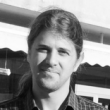
Research Assistant, FESB, University of Split
Ivo Marinić-Kragić is Reasearch Assistant who recently finished his Ph.D in Mechanical Engineering at Faculty of Electrical Engineering, Mechanical Engineering and Naval Architecture, Split, Croatia. The main topic of the doctoral thesis was engineering shape optimization and several research papers on the topic were published. His research interests are Numerical optimization, Coupling of shape optimization and numerical analysis, engineering application of computer fluid dynamics, parameterizations of 3D shape for numerical optimization, Enhanced reverse re-engineering.
Speeches
Production of electric energy from wind energy has been growing in popularity due to being renewable and pollution-free. Two mayor configurations of wind turbines exist: the Horizontal-Axis Wind turbines (HAWT) and the Vertical-Axis Wind Turbines (VAWT). HAWT configuration is generally more efficient thus it is more commonly used for large systems. Despite lower efficiency of VAWTs, they have recently been gaining popularity for smaller systems due to several advantages. VAWTs compared to HAWTs produce less noise and they have simpler design. VAWTs do not require an additional mechanism for tracking wind direction and the electric generator is lower which makes their installation comparatively simpler. These advantages make VAWTs popular for individual users (for example in domestic use). VAWTs can additionaly be divided in Darrieus and Savonius types. Darrieus VAWTs have higher efficiency while the Savonius has the following advantages: lower rotational speed, lower noise and ability to self-start. The current research presents the results of numerical optimization of Savonius type VAWT with a deformable blade. To evaluate the performance of any design, quasi-3D numerical simulation which includes transient CFD and transient structural analysis has to be conducted. As this requires large computational resources, the optimization procedure was conducted in several stages. The starting point for the optimization was pure aerodynamic optimization with 8 optimization variables where the Savonius blade was described by B-spline curve. This optimization itself requires computationally expensive transient CFD simulation so this was also conducted in several sub-stages. First a global optimization with smaller number of variables was conducted and once an optimal solution was obtained, local optimization was conducted using larger number of shape variables. The optimal solution from the pure aerodynamic optimization was used as an initial solution for deformable blade VAWT optimization. This stage introduces new dimensional variables and constraints. New variables are the
location of fixture points, and the distribution of blade thickness. In structural optimization, new constraint is the maximum stress during the VAWT rotation. The nature of the problem (non-linearity an noise) does not allow the usage of gradient methods so the problem in each stage was solved by combining genetic algorithms and surrogate models.